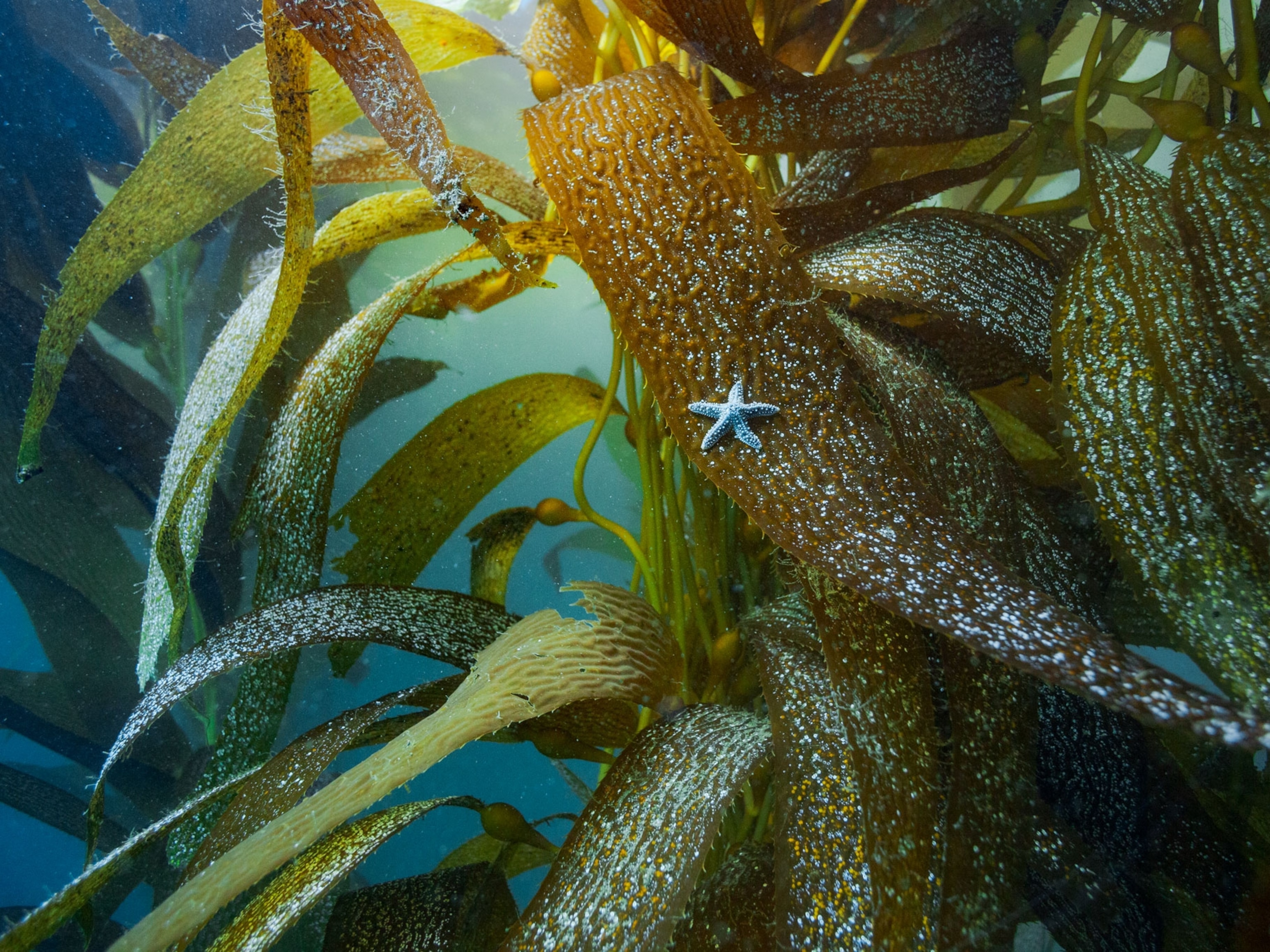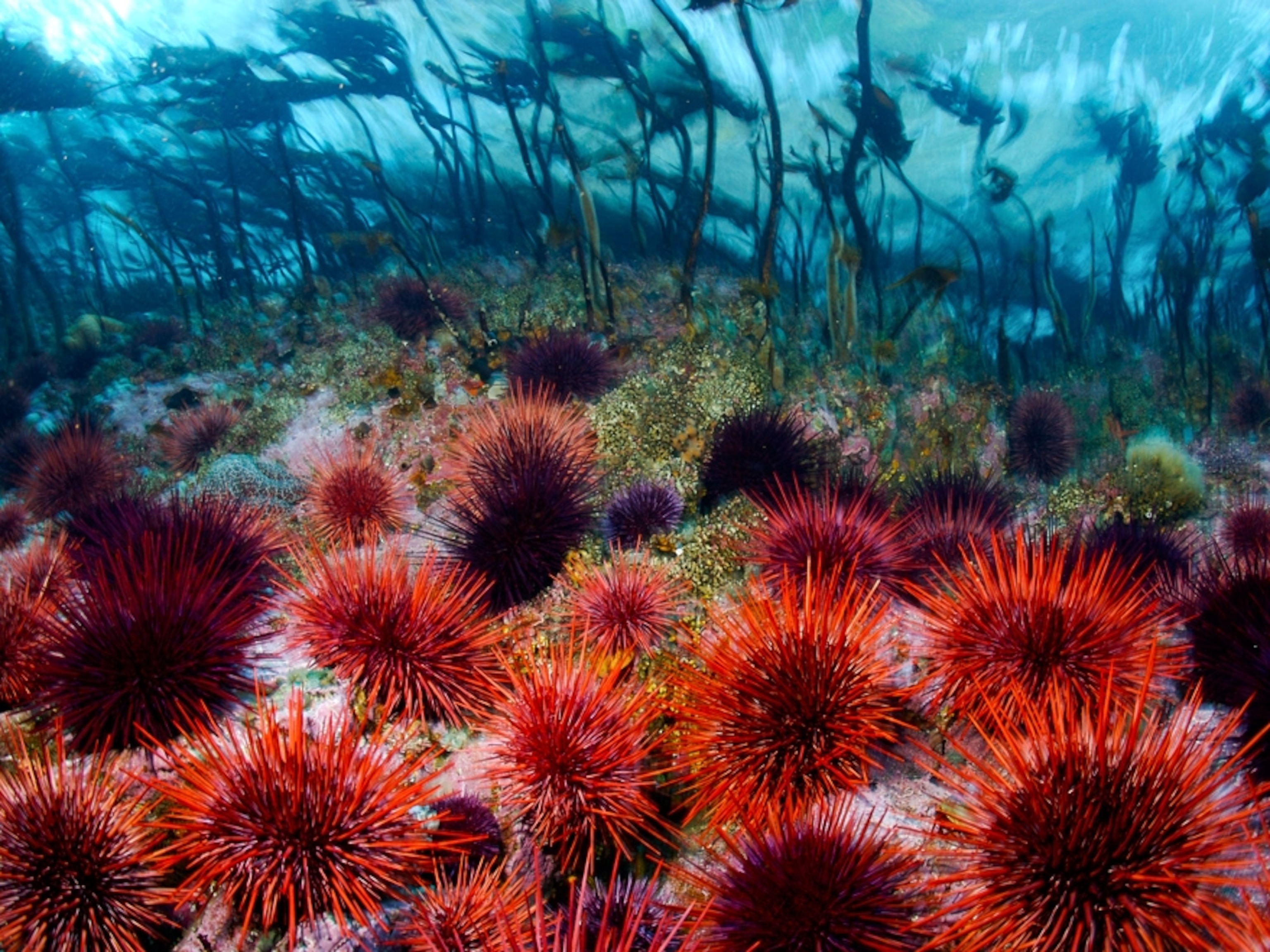
Eyeless Urchins "See" With Spines
Sea urchin bodies act as big spine-covered eyes, according to researchers who created "Twilight Zone" conditions to test how well the marine creatures can see.
The spiky body of a sea urchin acts as one big, spine-covered eye, confirms a new study that tested how well urchins can see.
Sea urchins, like their close relatives the sea stars (starfish), don't technically have eyes. Instead, the ball-like invertebrates detect light striking their spines and compare the beams intensities to get a sense of their surroundings.
(Related: "Sea Urchin Genome Reveals Striking Similarities to Humans.")
To explore urchins' visual capabilities, Sonke Johnsen and colleagues at Duke University collected 20 Strongylocentrotus purpuratus sea urchins from the wild and tested their reactions to sets of black disks.
Each urchin was placed in an otherwise empty, well-lighted tank and presented with two disk sizes, first a disk 2.3 inches (6 centimeters) wide and then one 3.9 inches (10 centimeters) wide. Each disk was placed 20 inches (half a meter) away from the urchin.
"The urchins were really fussy to deal with. Some just wouldn't move, like deer in headlights … if you can imagine a deer as a spiked ball," Johnsen said.
"But I guess for them it was a bit like being in a Twilight Zone episode, just being stuck in a featureless, well-lit room."
Urchins Watch Out for You?
All the sea urchins seemed oblivious to the smaller disks, Johnsen's team found. But when the creatures were presented with the larger disks, some urchins fled while others moved closer.
Johnsen and his team don't know why the urchins reacted differently to the larger disks, although the researchers speculate that the herbivorous urchins were unsure whether the black spots signaled predator or food.
(Related: "Noisy Eaters Are Cause of Mysterious Ocean Sounds.")
But the behavior suggests that even densely spined species such as S. purpuratus have limits to their visual ranges, the study authors say. Later experiments with other species could reveal the role spine density plays in how well urchins can see.
The finding also suggests that, even though urchins don't have eyes, their visual abilities are similar to those of marine invertebrates that do have eyes, such as the nautilus and the horseshoe crab.
Related Topics
Go Further
Animals
- Orangutan seen using plants to heal wound for first timeOrangutan seen using plants to heal wound for first time
- What La Palma's 'lava tubes' tell us about life on other planetsWhat La Palma's 'lava tubes' tell us about life on other planets
- This fungus turns cicadas into zombies who procreate—then dieThis fungus turns cicadas into zombies who procreate—then die
- How can we protect grizzlies from their biggest threat—trains?How can we protect grizzlies from their biggest threat—trains?
Environment
- What La Palma's 'lava tubes' tell us about life on other planetsWhat La Palma's 'lava tubes' tell us about life on other planets
- How fungi form ‘fairy rings’ and inspire superstitionsHow fungi form ‘fairy rings’ and inspire superstitions
- Your favorite foods may not taste the same in the future. Here's why.Your favorite foods may not taste the same in the future. Here's why.
- Are the Great Lakes the key to solving America’s emissions conundrum?Are the Great Lakes the key to solving America’s emissions conundrum?
- The world’s historic sites face climate change. Can Petra lead the way?The world’s historic sites face climate change. Can Petra lead the way?
History & Culture
- A short history of the Met Gala and its iconic looksA short history of the Met Gala and its iconic looks
- Meet the ruthless king who unified the Kingdom of Hawai'iMeet the ruthless king who unified the Kingdom of Hawai'i
- Hawaii's Lei Day is about so much more than flowersHawaii's Lei Day is about so much more than flowers
- When treasure hunters find artifacts, who gets to keep them?When treasure hunters find artifacts, who gets to keep them?
Science
- Why ovaries are so crucial to women’s health and longevityWhy ovaries are so crucial to women’s health and longevity
- Orangutan seen using plants to heal wound for first timeOrangutan seen using plants to heal wound for first time
Travel
- Why this unlikely UK destination should be on your radarWhy this unlikely UK destination should be on your radar
- A slow journey around the islands of southern VietnamA slow journey around the islands of southern Vietnam
- Is it possible to climb Mount Everest responsibly?Is it possible to climb Mount Everest responsibly?




